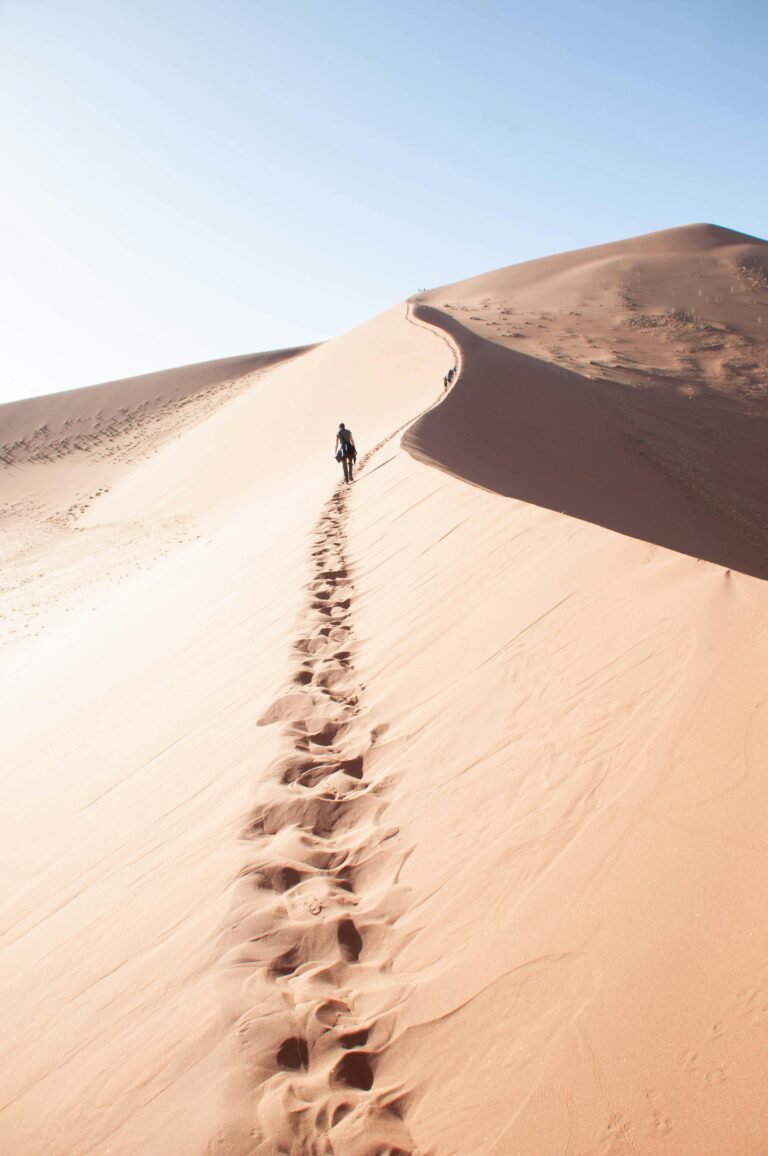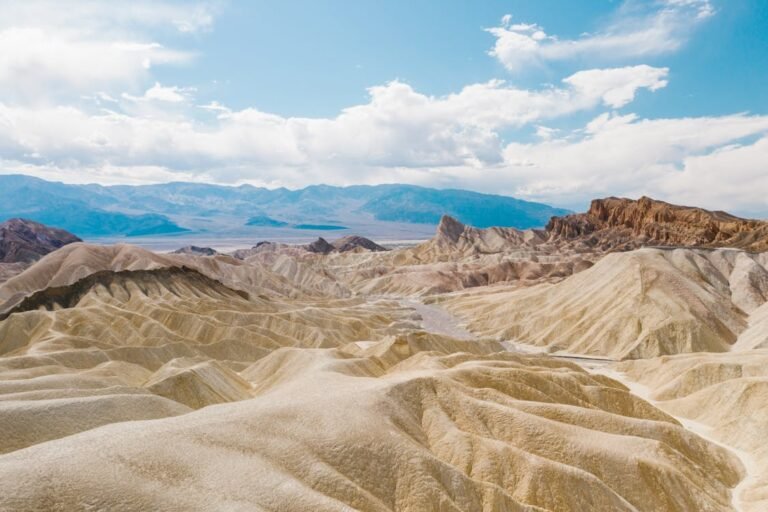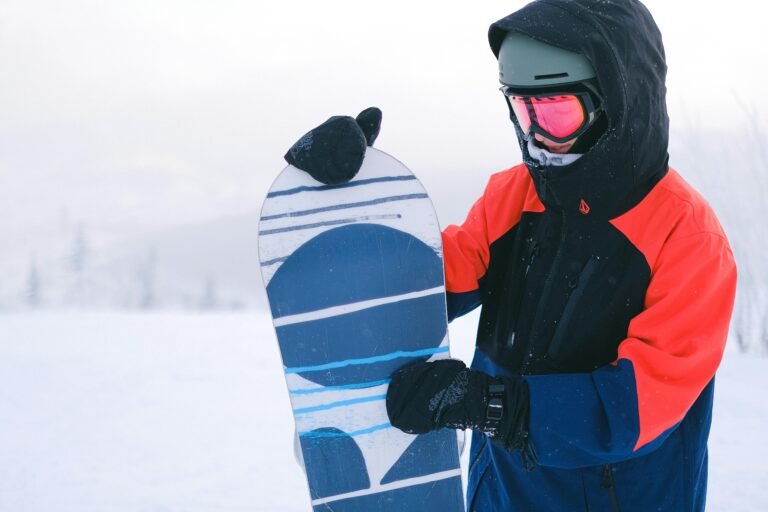Snowboarding Gear List: The Ultimate Must-Have Essentials

Snowboarding isn’t just a sport—it’s an experience. To make the most of it, you’ll need a comprehensive snowboarding gear list.
The right equipment can make or break your day. A poorly chosen board or uncomfortable boots can ruin the slopes, no matter how much you’ve spent on lift tickets.
But with the right setup, every run feels seamless and enjoyable.
Why Gear Matters
Good gear isn’t just about style—it’s about safety, comfort, and performance.
A cheap board or ill-fitting boots can wreck your control, while poor layers leave you cold and wet.
The right setup keeps you warm, dry, and focused, turning every ride into pure freedom.
What’s in This Guide
We’ll cover everything you need to make the most of your time on the mountain, including:
- Essential gear like boards, boots, and helmets.
- Smart layering to stay warm without overheating.
- Accessories and tools to maintain your setup.
Whether you’re hitting the slopes for the first time or upgrading for a new season, this guide will get you ready to ride with confidence. Let’s dive in.
Snowboards: Finding the Perfect Ride

Why the Right Snowboard Matters
The right board will elevate your riding, giving you control, confidence, and the freedom to tackle whatever the mountain throws at you.
But pick the wrong one, and it’s a different story.
An ill-suited board can make every run feel like a struggle, leaving you exhausted and frustrated instead of exhilarated.
A good fit means better performance and a more enjoyable ride every time.
Different Types of Snowboards
Snowboards are built for different kinds of riders and terrains. Here’s a quick guide to help you choose the right one:
Freeride Snowboards
- Best for advanced riders venturing into ungroomed terrain. These boards thrive in off-piste and powder conditions.
Freestyle Snowboards
- Shorter and more maneuverable, they’re perfect for tricks, jumps, and hitting the park.
All-Mountain Snowboards
- A jack-of-all-trades. These versatile boards handle a mix of terrains and are great if you like variety.
Powder Boards
- Built for deep snow with a wide nose and narrow tail, designed to float effortlessly in fresh powder.
Key Features to Look For
When shopping for a snowboard, these factors are crucial:
Length
- Short boards are nimble and great for beginners or freestyle riding. Longer boards provide more stability, especially at high speeds or in deep powder.
Width
- Make sure your board’s width matches your boot size to avoid toe or heel drag.
Flex
- Softer flex is forgiving and easier to control—ideal for beginners. Stiffer flex offers stability and precision for advanced riders.
Camber Profiles
- The shape of the board’s base (traditional camber, rocker, flat, or hybrid) impacts how it performs on different terrain.
Top Picks for Beginners
Starting out? Go for a snowboard with a softer flex and a rocker profile. These features make it easier to turn and keep you stable.
👉 Want more details? Check out our full guide here: Top Snowboards for Beginners.
Snowboarding Boots and Bindings

Boots: Your Connection to the Snowboard
Every movement you make on the slopes starts with your boots, so finding the right pair is essential for comfort, control, and performance.
Here’s what to look for:
Fit
- Your boots should feel snug but not overly tight. There shouldn’t be any heel lift or pressure points. A proper fit ensures better control and reduces fatigue.
Flex
- Beginners should go for softer flex boots—they’re forgiving and make turning easier. Advanced riders usually prefer stiffer boots for greater precision and responsiveness.
Materials
- High-quality boots have durable outer shells and heat-moldable liners that adapt to the shape of your feet. Features like BOA or speed-lacing systems make adjustments quick and hassle-free.
Fitting Tips
To avoid discomfort on the mountain, always try on boots with the same socks you’ll wear when riding.
When standing straight, your toes should just touch the front of the boot.
As you flex your knees, your toes should pull back slightly, leaving enough room to avoid cramping.
Breaking your boots in before hitting the slopes can save you from blisters and sore feet.
👉 Need suggestions? Check out our guide: Best All-Mountain Snowboard Boots.
Bindings: Securing Control
Bindings are what connect your boots to your board, translating your movements into smooth rides and precise turns.
The right bindings will feel like an extension of your body, giving you the control you need to handle any terrain.
Here’s what to keep in mind:
Compatibility
- Make sure your bindings match your snowboard’s mounting system. Common options include 2×4, 4×4, or channel systems.
Flex
- Softer bindings are forgiving and ideal for beginners. For more aggressive or technical riding, stiffer bindings provide the precision you need.
Adjustability
- Look for bindings with adjustable straps and highbacks. A customized fit improves energy transfer, reduces fatigue, and gives you more control on the slopes.
The Importance of Matching Gear
Your boots, bindings, and snowboard should complement each other.
A mismatch—like pairing stiff boots with soft bindings—can throw off your balance and control.
Take the time to make sure everything works together seamlessly for the best performance and comfort.
Investing in quality boots and bindings that fit your riding style ensures every ride feels comfortable, controlled, and ready for adventure.
Staying Warm and Protected: Outerwear and Base Layers

A solid layering system, paired with the right outerwear and accessories, helps you stay warm, dry, and ready to enjoy every moment, no matter how brutal the conditions get.
Layering Basics
Layering is the foundation of staying warm and regulating your body temperature on the slopes.
A smart combination of base, mid, and outer layers will keep you dry, block the wind, and insulate against the cold.
Base Layers
- Purpose: The base layer is your first defense against moisture and chills.
- Materials: Go for moisture-wicking fabrics like merino wool or synthetic blends. These pull sweat away from your skin, so you don’t end up cold after working up a sweat.
- Warmth Options: Stick with lightweight layers for mild days and heavier ones when temps plummet.
👉 Looking for recommendations? Check out this guide: Best Thermal Base Layers for Skiing and Snowboarding.
Mid-Layers
- Purpose: Mid-layers trap heat between your base and outer layers, providing essential insulation.
- Options:
- Fleece: Lightweight and breathable for moderate conditions.
- Down: Super warm and packable, though not ideal in wet weather.
- Synthetic Materials: Excellent for moisture resistance and consistent warmth, even when damp.
- Flexibility: Add or remove mid-layers based on the day’s weather.
Outer Layers
- Purpose: Outer layers protect against snow, wind, and rain while allowing your body heat to escape. They’re your armor against the elements.
- Features to Look For:
- High waterproof ratings (e.g., 10,000 mm or more) to stay dry.
- High breathability ratings (e.g., 10,000 g/m² or more) to prevent overheating.
Jackets and Pants
Your outerwear is your first shield against the mountain’s unpredictability.
- Insulated Jackets and Pants: These come with built-in layers for added warmth—perfect for bitterly cold days.
- Shell Jackets and Pants: Lightweight and versatile, designed for layering to suit changing conditions.
Key Features to Prioritize:
- Waterproofing to keep you dry.
- Breathability to keep you comfortable during intense runs.
- Adjustable hoods, cuffs, and vents for a customized fit.
👉 Need ideas? Here are some top options: Top Insulated Snowboard Jackets for Extreme Cold Weather.
Accessories for Warmth and Protection
Don’t underestimate the power of the right accessories—they can make or break your day.
- Gloves or Mittens: Waterproof and insulated gloves are a must. For extra cold days, consider heated options.
- Neck Gaiters or Balaclavas: Keep your neck and face shielded from windburn and frostbite.
- Snow Pants: Choose insulated, waterproof options with reinforced seams for durability and protection.
Snowboarding in tough weather doesn’t have to mean suffering through the cold.
With the right layers and outerwear, you can stay warm, dry, and focused on what matters: enjoying the ride.
Eye and Head Protection: Goggles and Helmets

Why Protection Is Non-Negotiable
Snowboarding is pure adrenaline—until things go wrong. Goggles and helmets are your first line of defense against impacts, harsh weather, and UV exposure.
They not only reduce the risk of injury but also give you the confidence to ride at your best.
👉 Want to dive deeper? Check out our guide: Common Skiing and Snowboarding Injuries and How to Avoid Them.
Choosing Goggles
Your goggles are more than just eye protection—they’re essential for clear vision in changing conditions.
The right pair helps you navigate the slopes safely while shielding your eyes from snow glare and harmful UV rays.
Features to Look For:
- Anti-Fog Coating: Keeps your lenses clear, even in fluctuating temperatures or humid conditions.
- UV Protection: Blocks harmful UVA and UVB rays, protecting your eyes from long-term damage.
- Lens Tints: Pick a tint based on the weather:
- Dark tints: Best for sunny, bluebird days.
- Amber or rose tints: Great for cloudy or low-light conditions.
- Clear lenses: Ideal for night riding.
💡 Fitting Tip: Your goggles should fit snugly against your face without gaps. Test them with your helmet to ensure compatibility and comfort.
👉 Need suggestions? Check out our guide: Best Ski Goggles for Beginners.
Choosing Helmets
Helmets aren’t optional—they’re a must-have for head protection.
A well-fitted helmet significantly reduces the risk of serious injury during falls or collisions.
Today’s helmets are lightweight, comfortable, and stylish, so there’s no excuse not to wear one.
Key Safety Features:
- Impact Ratings: Look for certifications like ASTM or CE, ensuring your helmet meets safety standards.
- Ventilation: Adjustable vents allow airflow to keep you comfortable, no matter the weather.
- Adjustable Straps: A snug fit is critical for maximum protection and comfort.
- Bonus Features: Some helmets come with extras like built-in audio systems or mounts for action cameras, adding a touch of convenience.
👉 Check out our top recommendations: Best Snowboard and Ski Helmets for Safety and Comfort.
When your head and eyes are well-protected, you can focus on what really matters: the freedom and excitement of snowboarding.
Additional Must-Haves: Accessories for Every Ride
Your snowboard, boots, and outerwear are the foundation of a solid setup—but the right accessories can take your snowboarding experience to the next level.
From practical tools to fun extras, these items add safety, convenience, and creativity to your time on the mountain.
Gear Beyond the Basics
Backpacks and Hydration Packs
- A compact, snow-specific backpack is perfect for stashing essentials like extra layers, snacks, and tools.
- Hydration packs with insulated tubes keep your water from freezing, so you can stay hydrated throughout the day.
Snowboard Locks
- Crowded resorts are a hotspot for theft. A lightweight cable lock secures your board while you take a break, offering peace of mind.
First Aid Kits
- Accidents happen, and being prepared makes all the difference. A compact first aid kit stocked with bandages, antiseptic wipes, pain relievers, and hand warmers can handle minor emergencies on the slopes.
Action Cameras
- Document your runs and tricks with an action camera like a GoPro. Designed to withstand snow and cold, these cameras are perfect for capturing epic moments or analyzing your technique later.
These accessories might not seem essential, but they can significantly enhance your time on the mountain.
Whether you’re focused on safety, convenience, or capturing the thrill of the ride, these extras are a smart investment that will make every trip more enjoyable and stress-free.
How Weather and Snow Conditions Impact Your Gear Choices

Snowboarding isn’t just about technique—it’s also about adapting to the mountain.
Properly matching your setup to the environment can make all the difference between an unforgettable ride and a miserable one.
Adapting Gear to Weather Changes
Different snow and weather conditions require specific gear adjustments.
Here’s how to adapt:
Powder
- Deep, soft snow calls for a board with a wider nose and setback stance to keep you floating. Waterproof outerwear is a must to stay dry as you carve through fresh powder.
Packed Snow
- Groomed or hard-packed snow needs boards with sharper edges for better grip and stability. Pair this with a waterproof, windproof jacket to keep you comfortable all day.
Icy Conditions
- Ice is unforgiving, so a board with advanced edge technology, like magne-traction, can help you maintain control. A well-insulated helmet protects you from both impacts and icy winds.
Gear Features to Prioritize
Your gear’s material and design are just as critical as the type of gear you choose:
Waterproofing and Breathability
- Outerwear with a waterproof rating of at least 10,000 mm is essential for wet snow, while good breathability prevents overheating during intense runs.
Moisture-Wicking Layers
- Base layers made of synthetic fabrics or merino wool pull sweat away from your skin, helping you stay dry and warm in colder conditions.
Prepping for Extreme Cold or Warm Days
Extreme Cold
- Insulated jackets and pants are key, along with fleece mid-layers and thermal gloves. Don’t forget accessories like balaclavas, neck gaiters, and hand warmers to keep every part of you warm.
Warm Days
- Go for lightweight, breathable layers to stay cool. A shell jacket without insulation is ideal, and anti-fog goggles are a lifesaver when temperatures fluctuate.
💡 Pro Tip: Check the weather forecast before heading out and adjust your gear to match the conditions.
👉 Want more tips? Explore this guide: Weather and Snow Conditions: How They Affect Skiing and Snowboarding.
By gearing up for the specific conditions you’ll face, you can improve your performance, stay comfortable, and make the most of every ride.
Links to Key Beginner Resources

Starting your snowboarding journey is equal parts thrilling and overwhelming.
The good news? With the right resources and a clear plan, you can build skills, boost your confidence, and fully enjoy your time on the slopes.
Here’s where to start.
Starting Your Snowboarding Journey
The foundation of snowboarding lies in mastering the basics.
Focus on achievable goals like finding your stance, learning to turn, and controlling your speed.
With consistent practice, these techniques will soon feel natural.
Why Training Matters
- It helps you avoid forming bad habits that can be tough to unlearn later.
- Practicing fundamentals like stopping and riding switch prepares you for advanced maneuvers down the line.
👉 Get started with this guide: Snowboarding Techniques: First Moves to Master.
Snowboarding vs. Skiing
New to winter sports? One of the first questions you might face is whether to snowboard or ski.
While both are great, snowboarding offers some unique advantages that many beginners find appealing.
Why Choose Snowboarding?
- Snowboarding has a steeper initial learning curve, but beginners often progress faster once they’ve mastered the basics.
- The sensation of carving down the slopes on one board feels incredibly free and fluid.
- Falls tend to be less intimidating since both feet are strapped to the board, reducing the risk of leg injuries compared to skiing.
Key Differences
- Skiing: Easier to balance at first because you control two skis independently, but harder to master turns and stops.
- Snowboarding: Requires learning balance and edge control upfront but allows for smoother transitions once you’re comfortable.
👉 Still undecided? Check out this comparison: Snowboarding vs. Skiing: Which is Better for Beginners?.
Whether you’re learning techniques or debating which sport to pursue, these beginner resources will help you navigate your first steps with confidence.
With the right knowledge and a little persistence, you’ll be carving down the slopes like a pro in no time.
Conclusion
Every piece of equipment, big or small, plays a role in your safety, comfort, and performance.
When you invest in quality gear, you’re not just improving your ride—you’re ensuring you can embrace every moment on the mountain without unnecessary risks.
Having the right setup for varying weather and snow conditions transforms your day from frustrating to exhilarating.
No matter if you’re just starting out or you’ve been riding for years, this guide is designed to help you stay ready for every run.
So, get out there, gear up properly, and enjoy the pure freedom that snowboarding brings.






